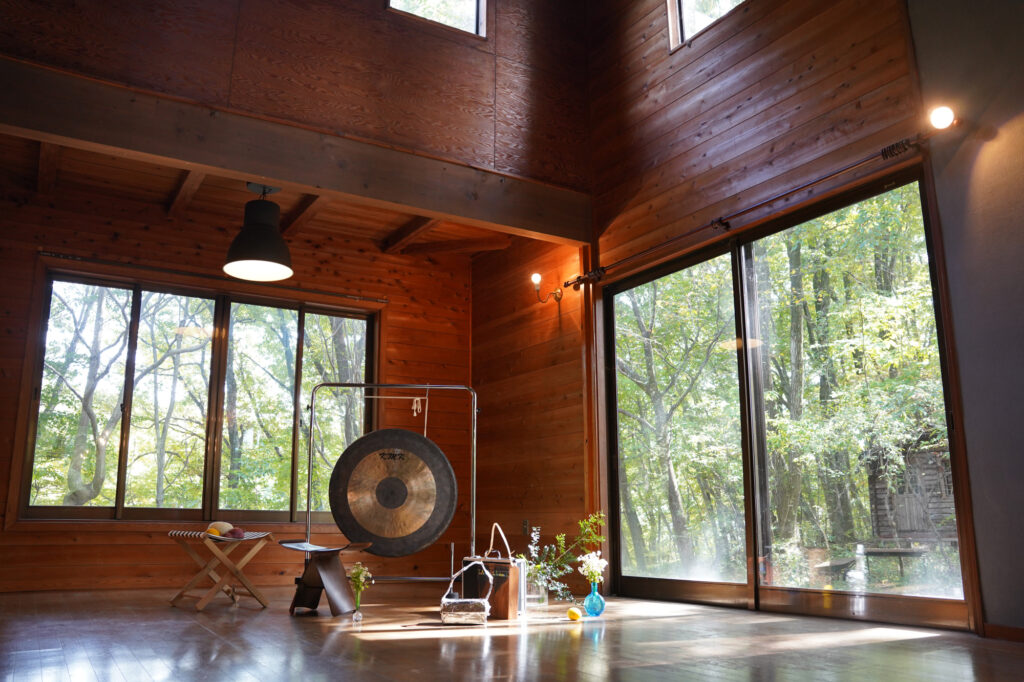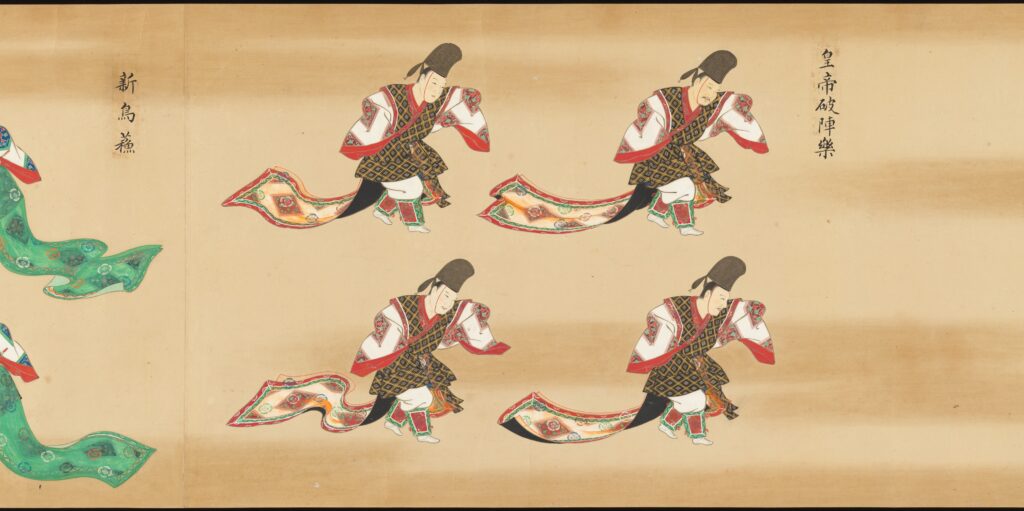
This is an excerpt from a conversation with Mr. Taro regarding "Gagaku" and "traditional music." Please enjoy these anecdotes, which may or may not be related to Gagaku, and the topics that arose during our lively discussion.
Me (Aoyagi): At Taro's place, gagaku music is playing all the time, isn’t it?
Taro (hereafter, T): Is it okay if I keep it on?
Me: No problem at all. Maybe it depends on the piece, but gagaku doesn’t really interrupt my thoughts, you know?
T: That's because gagaku isn’t directed at us.
Me: It feels similar to environmental sounds.
T: Exactly! In movies or in today's music, everything is aimed straight at your heart, but gagaku clearly faces a different direction. There's a most important performance in gagaku called " The Ritual of Mikagura "(Kashikodokoro Mikagura), held once a year in the Imperial Court (in mid-December), where it’s performed to an empty space, aimed at the "gods," for about six hours. Even the Emperor has never heard it; only a few people involved, like those changing the torches, can hear it. Isn’t it amazing that this tradition continues even today?
Me: Wow! The songs, the singing styles, and the performance methods directed at the gods have been preserved and passed down. And there are still performers who can play them. Japan really is incredible!
T: Yes, indeed. Despite various changes over time, Japan has a certain audacity, doesn’t it? Music from over a thousand years ago, the spirit in which it was played, is still transmitted, performed, and remains as part of actual rituals. While we can’t hear the performances of Mikagura at the Imperial Court, we can listen to other pieces and hear the sounds of gagaku instruments. Lately, I've been thinking a lot about what kind of effect it would have if the sound of gagaku were linked with visual media like movies or anime.
Me: Wow, I would love to see that incorporated! It seems like it would open up a unique world, a new dimension.

Supplementary Notes on Side Stories:
Within the "Kuniburi no utamai" repertoire, there is "Mikagura." The ritual where all the pieces of the Mikagura suite, numbering over ten, are performed is known as " The Ritual of Mikagura "(Kashikodokoro Mikagura) This is especially sacred within the Kuniburi no utamai.
The "Annual Mikagura Ritual" (Kashikodokoro Mikagura), which was performed this time, is held annually in mid-December at the Imperial Court. It is not open to the public, but it is said that in the front yard of the Imperial Court’s Kashikodokoro, the ritual takes place solemnly in the stillness of the dark night, with torches burning, from around 6 PM to past midnight.
*Note: At places like Ise Shrine, Kasuga Shrine, Tsurugaoka Hachimangu Shrine, and Fushimi Inari Shrine, parts of Mikagura are performed during festivals and other occasions, making it accessible to the general public.
Incidentally, the modern term "gagaku" encompasses:
◆" Kuniburi no utamai," traditional Japanese music based on ancient music that has been performed since the Asuka and Nara periods.
◆Foreign music (pieces and dances) that came from the Korean Peninsula, the Chinese mainland, India, and other regions after the Asuka and Nara periods.
◆Songs that developed in the Heian period, such as "Saibara" and "Rōei."

Gagaku, which has been passed down for over a thousand years, includes various pieces, each with distinct characteristics and instruments. What mindset did people have when playing and listening to it? The more I study it, the more deeply interested I become, as it provides fresh insights for us living in the present day.
It feels like it awakens something like a "wish" that we should inherently possess.
Written by Atsuko Aoyagi / ao.Inc.
#DailyThoughts #JapaneseTraditionalMusic #Composition
#Gagaku #ComposingGagaku #NonMusic #GagakuPerformance
#FilmMusic #CinematicMusic #SpatialMusic #GagakuStories #SideNotes
#WhyIs #Gagaku #Layer #AndMysterious